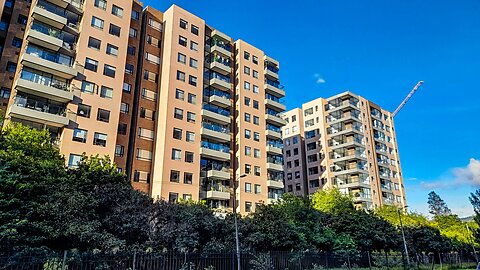Jeffrey Miron and Pedro Aldighieri
The Biden administration plans to announce a new cap on rent increases for certain affordable housing units subsidized by the federal government. The move, which will limit yearly rent increases to 10 percent for low‐income housing tax credit properties, has been hailed by tenant advocates but criticized by others in the housing industry.
As we argue in a chapter on rent control for the forthcoming War on Prices, such policies are misguided and ultimately counterproductive. While well‐intentioned, rent control fails to achieve its primary goal of improving housing affordability for the poor and disadvantaged. In fact, it often generates unintended consequences that exacerbate the very problems it seeks to solve.
Economic theory predicts that binding rent controls will discourage upkeep and improvements on rent‐controlled units, resulting in lower property values. Landlords, unable to charge market rents, convert rental units to condos and sell them, reducing the quantity of rent‐controlled housing and creating rental housing shortages. Tenants in rent‐controlled units become less mobile to avoid losing access to below‐market rents.
Empirical evidence largely confirms these predictions. Studies have shown that rent control leads to a reduced supply of rental housing, as seen in San Francisco and Cambridge, Massachusetts. It also results in the misallocation of housing, with tenants sticking to apartments that don’t reflect their needs. Rent‐controlled units often have worse maintenance and more quality issues compared to market‐rate units.
Crucially, rent control often fails to benefit the intended recipients—poor and minority households. In San Francisco, rent control accelerated gentrification as landlords converted rental units to upscale condos. In St. Paul, the benefits of rent control accrued primarily to white, more affluent tenants, with little wealth transfer from landlords to disadvantaged renters.
The most sustainable and effective way to promote affordable rents is to enable new construction by deregulating zoning, land use, and building requirements. Such policies make development cheaper and supply more responsive to prices, keeping rents in check. If low‐income households still struggle with affordability, targeted approaches like housing vouchers are a leaner, more cost‐effective alternative to rent control.
While the Biden administration’s proposed rent cap may seem like a quick fix, it ignores the fundamental issues plaguing the housing market. Price controls prevent the market from efficiently allocating scarce resources and discourage the investments needed to expand affordable housing. The unintended consequences likely outweigh any short‐term benefits.
Policymakers should heed the lessons from economic theory and real‐world evidence. Rent control, even in its more moderate forms, is a flawed tool that creates more problems than it solves. Instead of resorting to price controls, the focus should be on removing barriers to new housing development and providing targeted assistance to those who need it most. Only then can we address the nation’s affordable housing crisis.
Readers can find more about rent controls in our chapter for Ryan Bourne’s The War on Prices, published by the Cato Institute and available for pre‐order now. The book is poised to become an essential read for anyone interested in the intersection of economics and public policy. Other chapters include discussions of “greedflation,” the Biden administration’s war on “junk fees,” the alleged “pink tax” on products marketed to women, and much more.
This article appeared on Substack on March 29, 2024.

